What are we to do when antibiotics are no longer effective? Patients from all over the world come to Georgia to be treated with bacteriophages. In the meantime, phage therapy is also available in Belgium.

Tanja Diederen lives near Maastricht in the Netherlands. She has been suffering from Hidradenitis suppurativa for 30 years. Its a chronic skin disease in which the hair roots are inflamed under pain — often around the armpits and on the chest.
€3,900 for treatment in Georgia
In August 2019, the now 50-year-old made a radical decision: she discontinued the antibiotics, which were becoming less and less effective. And she traveled to Georgia for two weeks to undergo treatment with bacteriophages (or phages for short).
Read more: Big Pharma nixes new drugs despite impending 'antibiotic apocalypse'
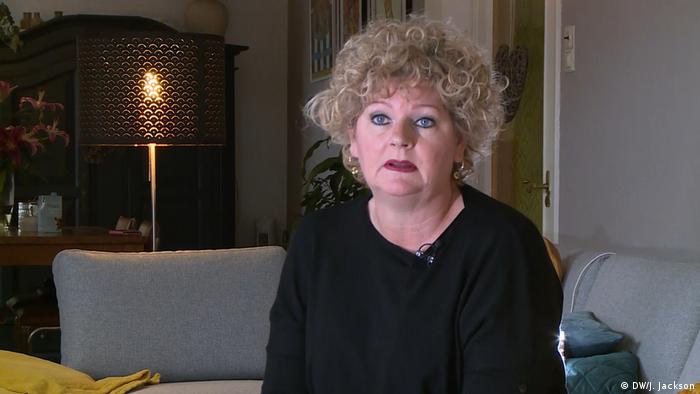
Radical decision: treatment with bacteriophages has helped Tanja Diederen
Such phage therapy is not yet approved in most Western European countries. She paid 3,900 euros out of her own pocket in the hope that the unconventional therapy would help her.
Bacteriophages are viruses that fight against the proliferation of their host bacteria. Therapy with bacteriophages involves the oral administration of a single, isolated type of phage. They attach themselves to their bacterial counterparts in the patient's body in order to survive.
Read more: Drug-filled rivers aiding resistance to antibiotics
Healing without antibiotics
The phages reverse the polarity of the bacterial cell in such a way that it produces further phages, filling up with more and more phages and finally bursts. Then, the released phages attach themselves to other bacteria until all of the bacteria has been destroyed.
Journey into the unknown
"It tastes a bit like mushrooms," Tanja Diederen remarked as she took her morning phage dose. "When I went to Georgia, I was at first very nervous and excited, but above all disappointed about the treatment here in Holland."
After antibiotics stopped working for her, her doctor suggested that she take biopharmaceuticals, i.e. genetically engineered drugs. He had never heard of bacteriophages.
Instead, Diederen decided to look for treatment options with bacteriophages on her own, which she had heard about in a television program.
Read more: Superbugs kill 33,000 in Europe each year, says study
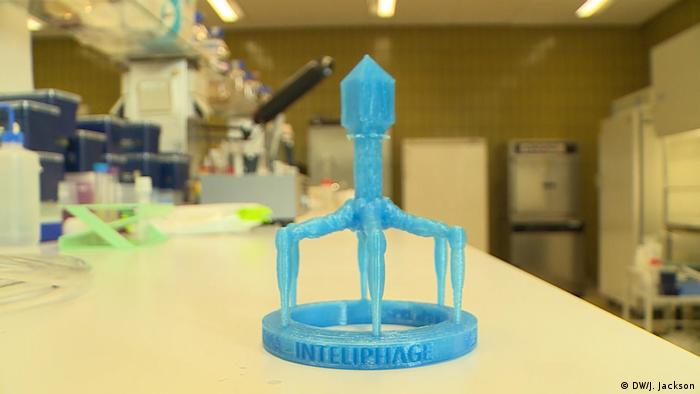
A phage model — phages are viruses, that multiply in bacteria and then destroy them
The doctor never heard of phages
She came across the Georgi-Eliava Institute in Georgia, which has been researching bacteriophages since 1923 — just a few years after their discovery. Georgia has since developed into the global center of phage therapy.
During the Cold War, antibiotics were difficult to get there or anywhere in the Soviet Union. Treatment with phages was the best way to cure infectious diseases. Today, the Eliava Institute has one of the largest therapeutic collections of bacteriophages in the world.
Tanja Diederen stayed in treatment for two weeks, after which she traveled back to the Netherlands with a large suitcase full of phage tins. Since she began taking two different phages a day and applying a cream, she feels better.
She has more energy again and the small inflammations on her chest and armpits have decreased. The large inflammations come and go, but not as severe as before.
"It doesn't feel illegal to me"
Every three months Diederen travels to Belgium — 15 kilometers away — to pick up a new ration of bacteriophages sent from Georgia for 500 euros. Her health insurance doesn't pay for this. Belgium is the only Western European country where phages are allowed. In the Netherlands, as in all other countries, they can only be used in individual cases to save lives or relieve severe pain.
Read more: Chicken meat rife with antibiotic-resistant superbugs
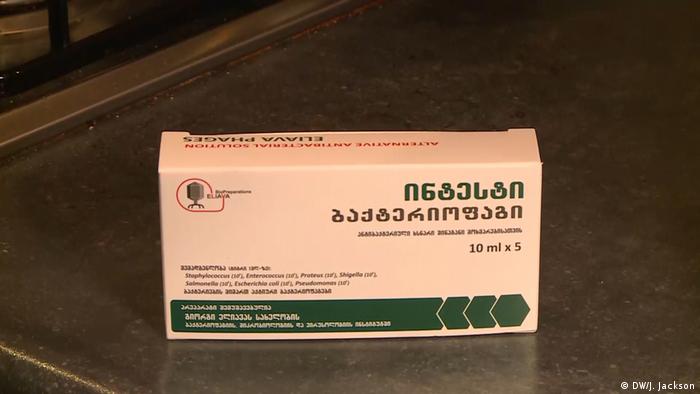
Communicating with the Georgian doctors was difficult for Tanja Diederen. She needed a translator.
Her physician is solely responsible for the application.
"It doesn't feel illegal to me," said Diederen. "I am one hundred percent sure that this medicine will help many people."
Like antibiotics, bacteriophages can also lead to bacterial resistance. Their big advantage, however, is that they are always one step ahead of the bacteria and can overcome the resistance. In addition, they are always directed against a specific type of bacteria and thus leave useful bacteria undamaged, like in the intestine, for example.
Before phage treatment, it is always necessary to determine which bacteria actually trigger the disease. The phages are then produced individually for each patient — often in Georgia.
Bacteriophages permitted in Belgium
Such an individual medication does not meet the applicable regulations for medicinal products in any Western European country. It would take too much effort to have each individual phage formulation approved by the authorities.
Read more: 90 years after penicillin: Artilysin could replace antibiotics
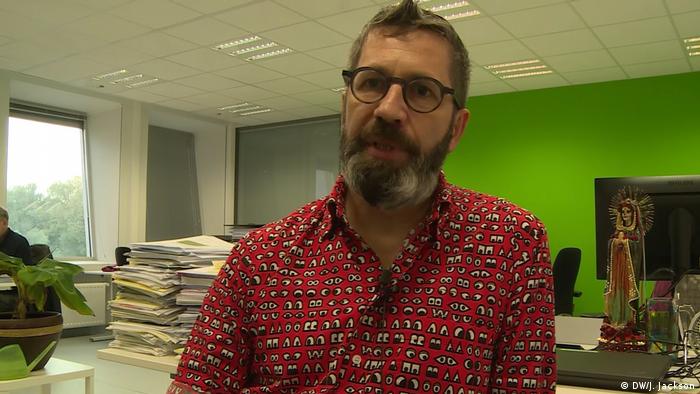
Professor Jean-Paul Pirnay from the Queen-Astrid Military
Hospital in Brussels works with bacteriophages
Not so in Belgium. Since last year, this process can be legally circumvented by the Scientific Health Institute, in cooperation with doctors, patients, manufacturers, pharmacists and the Belgian Federal Office for Medicinal Products, issuing a certificate for the required phage ingredients. Pharmacists will then be able to use them for the manufacture of bacteriophages, subject to certain guidelines.
"We have used the existing legal framework to insert the bacteriophages," said Dr Jean-Paul Pirnay, who works at the Queen Astrid Military Hospital in Brussels on bacteriophages.
Around 30 patients have already been treated there. Currently, the military hospital is the only place in Belgium where bacteriophages are produced.
Useful supplement to antibiotics
"We need pharmaceutical companies to make the phage," says Pirnay. "A hospital can't produce all phages for a growing number of patients."
But industrial production of phages would require a clearer legal framework, and research is not yet ready.
"I believe that phages will not replace antibiotics," he said. "Both will be used together to make antibiotics more effective."
Tanja Diederen wants to continue her treatment in Brussels in the future. Communication with the Georgian doctors was difficult for her, she always needed a translator.
"I really hope that phages will soon be allowed in Europe," she said. "Going to Georgia is quite difficult and expensive."
Germany and the Netherlands are currently conducting pilot studies to see whether an individual prescription of bacteriophages would be possible. France has already imported Belgian phages and agreed to their use.
Read more: Beware of germs in hand dryers
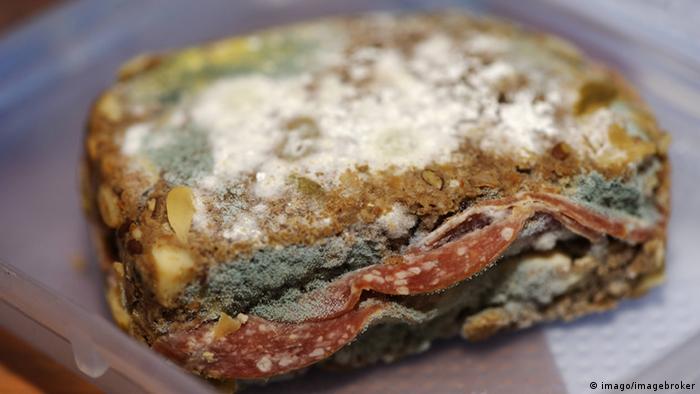
BACTERIA, VIRUSES, MOLD: LIFE-THREATENING YET INDISPENSABLE
Ewww!
Just scrape the mold off, right? Wrong. A moldy old sandwich like this one is anything but harmless. While there are some harmless kinds of mold - like on Camembert cheese - many molds are toxic. Furthermore, mycelium spores can trigger allergies. Through contact with highly toxic types of mold, humans with weakened immune defenses could even die as a result of an extended exposure.
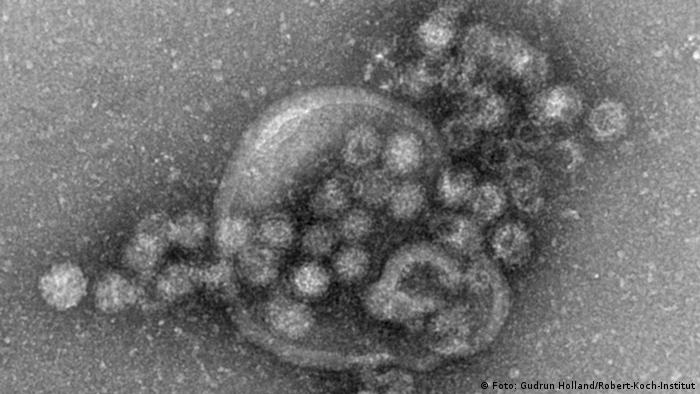
BACTERIA, VIRUSES, MOLD: LIFE-THREATENING YET INDISPENSABLE
Also viruses can contaminate food
Norovirus or stomach flu is transmitted person-to-person through traces of vomit or feces. Just 100 tiny norovirus particles are enough to infect someone. The virus can easily pass into the food chain via infected drinking water.
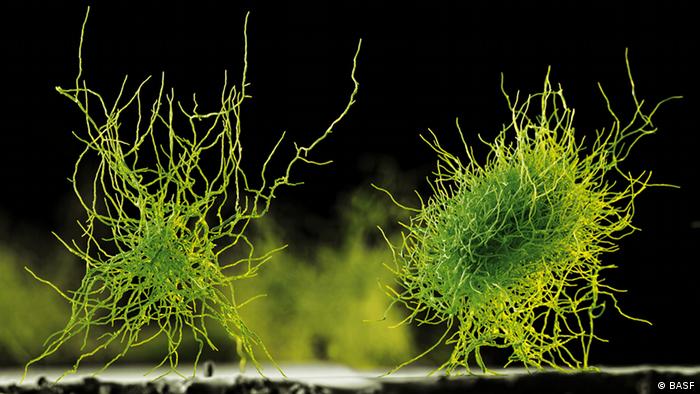
BACTERIA, VIRUSES, MOLD: LIFE-THREATENING YET INDISPENSABLE
Mold as a biocatalyst
Mold can also be useful: Fungi is able to break down carbon hydrates, fats and proteins - more efficiently than any other organism. Industry makes use of a genetically modified Aspergillus niger fungus, which produces enzymes that can be used in food processing and production of detergents - like a living factory.
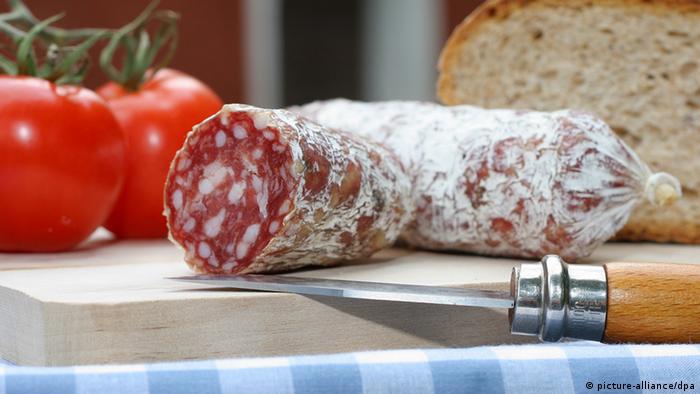
BACTERIA, VIRUSES, MOLD: LIFE-THREATENING YET INDISPENSABLE


BACTERIA, VIRUSES, MOLD: LIFE-THREATENING YET INDISPENSABLE
Bacteria preserves foods
Thousands of years ago, humans learned to use lactic acid bacteria - for the production of yoghurt, kefir, sourdough bread and cheese. Raw milk warmed to 20 degrees Celsius is heaven for bacteria: Within 10 hours, the milk will go sour. Milk fermented with the help of bacteria, however, can stay edible for much longer.
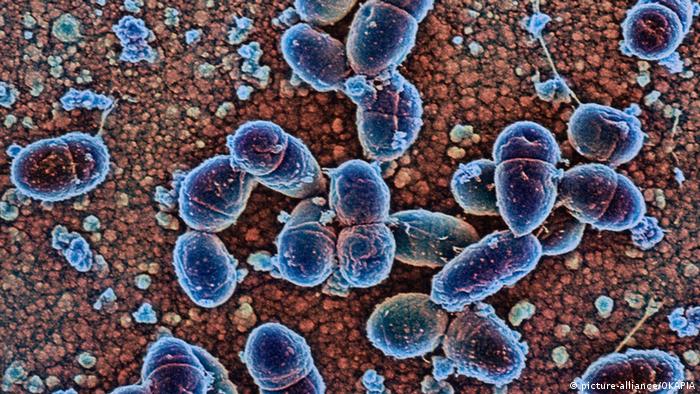
BACTERIA, VIRUSES, MOLD: LIFE-THREATENING YET INDISPENSABLE
Too much of a good thing
One of the many varieties of lactic acid bacteria are streptococci, which play a role in producing sauerkraut and fermented milk products. Although streptococci are everywhere - on humans, animals and plants - some of them are unhealthy. Some strains of strep can trigger tooth decay or sepsis, commonly known as blood poisoning.
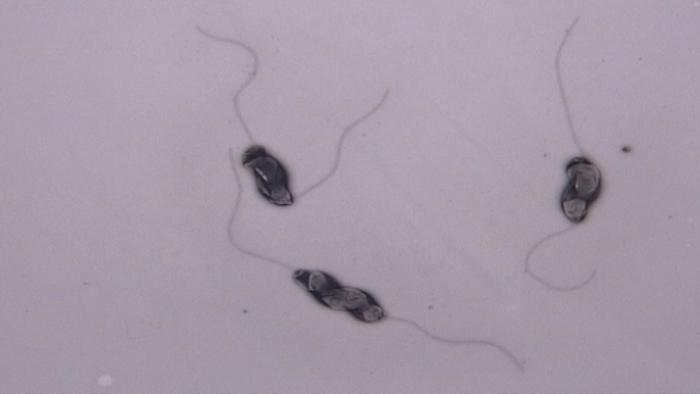
BACTERIA, VIRUSES, MOLD: LIFE-THREATENING YET INDISPENSABLE
Dangerous diarrhea
Rod-shaped bacteria like Campylobacter and Salmonellae cause illness and death the world over. Undercooked beef, pork or chicken containing Campylobacter is a common cause of diarrhea wordwide. Typhus is the most dangerous form of salmonellae, triggering high fever, weak heartbeat and constipation. Every year, about 32 million people are si BACTERIA, VIRUSES, MOLD: LIFE-THREATENING YET INDISPENSABLE
Dangerous diarrheaThousands of years ago, humans learned to use lactic acid bacteria - for the production of yoghurt, kefir, sourdough bread and cheese. Raw milk warmed to 20 degrees Celsius is heaven for bacteria: Within 10 hours, the milk will go sour. Milk fermented with the help of bacteria, however, can stay edible for much longer.

BACTERIA, VIRUSES, MOLD: LIFE-THREATENING YET INDISPENSABLE
Too much of a good thing
One of the many varieties of lactic acid bacteria are streptococci, which play a role in producing sauerkraut and fermented milk products. Although streptococci are everywhere - on humans, animals and plants - some of them are unhealthy. Some strains of strep can trigger tooth decay or sepsis, commonly known as blood poisoning.

BACTERIA, VIRUSES, MOLD: LIFE-THREATENING YET INDISPENSABLE
Dangerous diarrhea
Rod-shaped bacteria like Campylobacter and Salmonellae cause illness and death the world over. Undercooked beef, pork or chicken containing Campylobacter is a common cause of diarrhea wordwide. Typhus is the most dangerous form of salmonellae, triggering high fever, weak heartbeat and constipation. Every year, about 32 million people are si BACTERIA, VIRUSES, MOLD: LIFE-THREATENING YET INDISPENSABLE
Rod-shaped bacteria like Campylobacter and Salmonellae cause illness and death the world over. Undercooked beef, pork or chicken containing Campylobacter is a common cause of diarrhea wordwide. Typhus is the most dangerous form of salmonellae, triggering high fever, weak heartbeat and constipation. Every year, about 32 million people are sickened from typhus - mainly by drinking impure water.
WWW LINKS
AUDIOS AND VIDEOS ON THE TOPIC
HEALING WITHOUT ANTIBIOTICS
cleaned from typhus - mainly by drinking impure water.
Author: Fabian Schmidt
SEE
https://plawiuk.blogspot.com/search?q=PHAGES
https://plawiuk.blogspot.com/search?q=BACTERIOPHAGE
https://plawiuk.blogspot.com/search?q=PHAGE
https://plawiuk.blogspot.com/search?q=BIOPHAGES
Author: Fabian Schmidt
BACTERIA, VIRUSES, MOLD: LIFE-THREATENING YET INDISPENSIBLE
Bacteria preserves foods
Thousands of years ago, humans learned to use lactic acid bacteria - for the production of yoghurt, kefir, sourdough bread and cheese. Raw milk warmed to 20 degrees Celsius is heaven for bacteria: Within 10 hours, the milk will go sour. Milk fermented with the help of bacteria, however, can stay edible for much longer.
WWW LINKS
AUDIOS AND VIDEOS ON THE TOPIC
Healing without antibiotics
Author: Fabian Schmidt
SEE
https://plawiuk.blogspot.com/search?q=PHAGES
https://plawiuk.blogspot.com/search?q=BACTERIOPHAGE
https://plawiuk.blogspot.com/search?q=PHAGE
https://plawiuk.blogspot.com/search?q=BIOPHAGES
Author: Fabian Schmidt

BACTERIA, VIRUSES, MOLD: LIFE-THREATENING YET INDISPENSIBLE
Bacteria preserves foods
Thousands of years ago, humans learned to use lactic acid bacteria - for the production of yoghurt, kefir, sourdough bread and cheese. Raw milk warmed to 20 degrees Celsius is heaven for bacteria: Within 10 hours, the milk will go sour. Milk fermented with the help of bacteria, however, can stay edible for much longer.
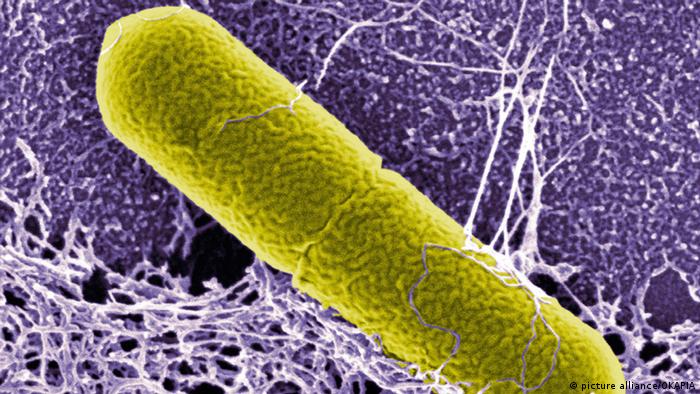
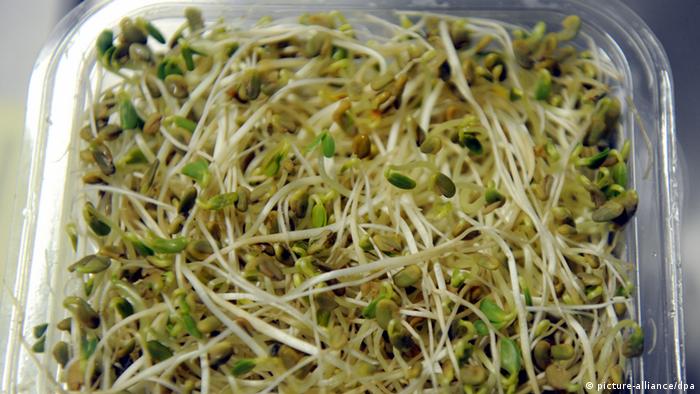
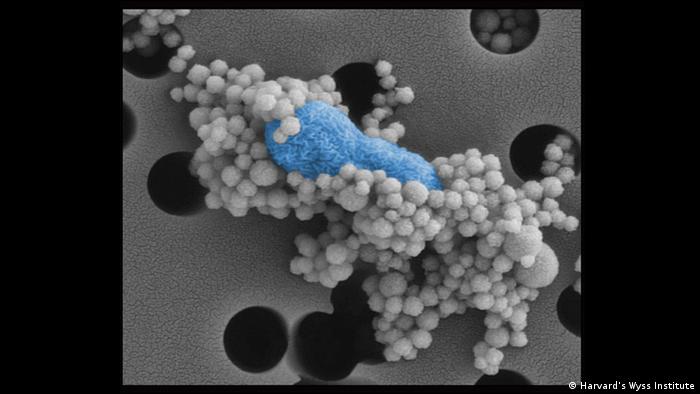
No comments:
Post a Comment